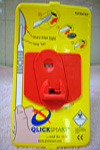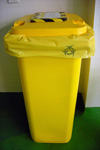Surgical Environment
Unit 14: Surgery Etiquette
Air in contact with the wound can be a significant vehicle for bacterial contamination. The bacteria in the air are usually from the animal or personnel within the theatre. The concentration of bacteria in the air is directly related to the number of people in the theatre and the degree of movement.
Movement of personnel in and out of the theatre should be kept to a minimum.
The operating room should be away from general “traffic flow” and it should not be used for other purposes. Ideally, the scrub sink should be in an adjoining room.
The room should be easily cleaned and not used as a general storage area. The floors and walls should be constructed of an impervious, non-staining material. Operating room furniture should be constructed from stainless steel and glass for easy cleaning.

Clean operations should be scheduled before contaminated procedures.
The instrument table should be maintained in an orderly manner during the procedure and any contaminated materials either placed straight into the kick bin under the table.
Swabs, if collected for a post-operative count, should be placed into a waterproof container adjacent to the table.
Waste Disposal
In the interests of Health and Safety, the following procedures for disposal of waste materials should be followed:
1. Containers for Sharps
Needles, syringes and scalpel blades must be placed in these containers. Biologically hazardous materials (such as microscope slides, blood tubes and live vaccine vials) may also be placed in these containers.
Scalpel blades may also be disposed of in a custom-made disposable blade remover/disposal unit.
2. Biological Hazardous Material Bag
For all materials which are potentially a biological hazard, such as blood soaked bandages and swabs. No sharps are to be placed in these bags.
3. General Rubbish- Into regular bins.


